Area of Quadrilateral: Formula and Examples
Table of Contents
Introduction
Area of Quadrilateral
A quadrilateral is a polygon with four sides, four vertices, and four angles. It is one of the simplest shapes in geometry but can take on various forms, each with unique properties. The general properties of all quadrilaterals include having four sides and the sum of their interior angles always adding up to 360 degrees. This foundational characteristic is essential for understanding the broader category of polygons and their properties.
Quadrilaterals can be classified into several specific types based on the lengths of their sides, the measures of their angles, and the relationships between their sides and angles. The main types of quadrilaterals are squares, rectangles, parallelograms, rhombuses, trapezoids (trapezia in British English), and kites. When discussing the area of a quadrilateral, the formula used depends on the specific type of quadrilateral.
Analogy of Definition
How to Find the Area of Quadrilateral?
The area of a quadrilateral refers to the measure of the space enclosed within the four-sided polygon. It is determined by applying specific formulas based on the type of quadrilateral and its unique characteristics.
Method
Calculating the Area of a Quadrilateral
The area of a quadrilateral can be calculated using various methods, including the use of specific formulas for different types of quadrilaterals, the application of trigonometric functions, and the division of the quadrilateral into triangles to simplify the area calculation.
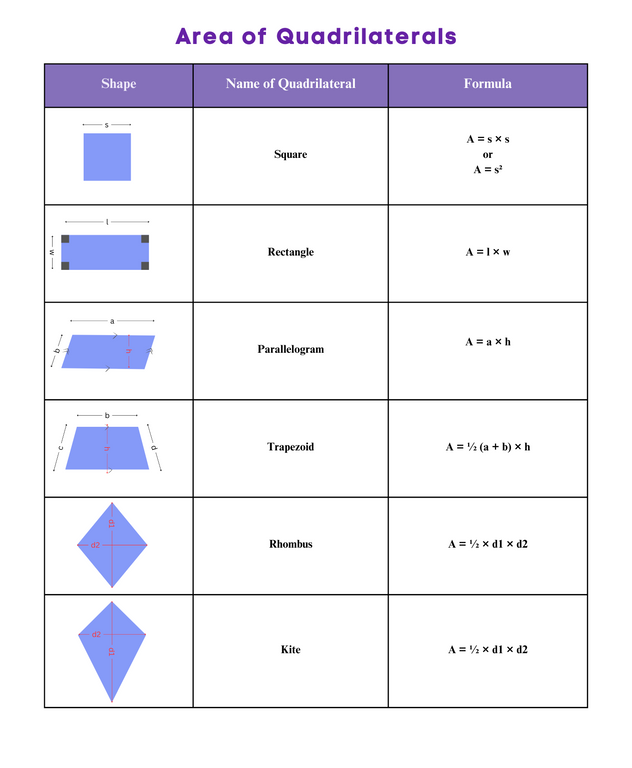
Examples
Example 1: Area of Square
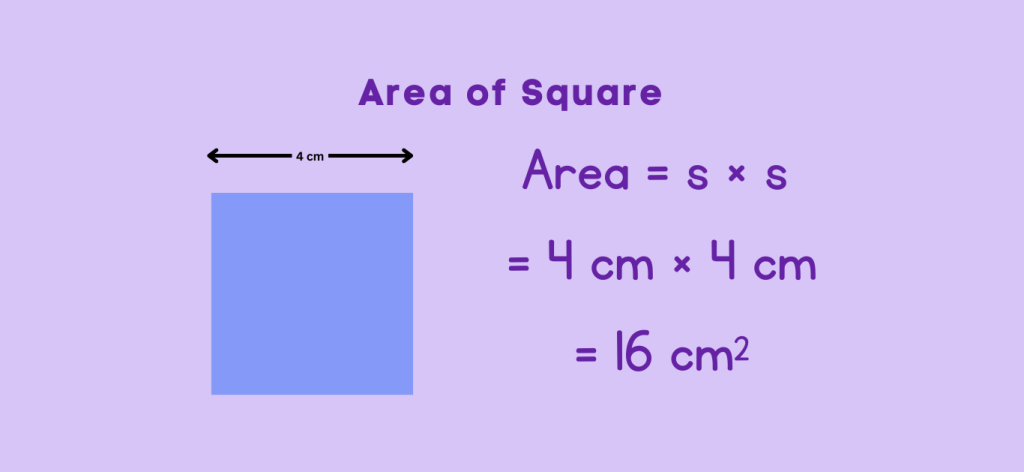
Example 2: Area of Trapezoid
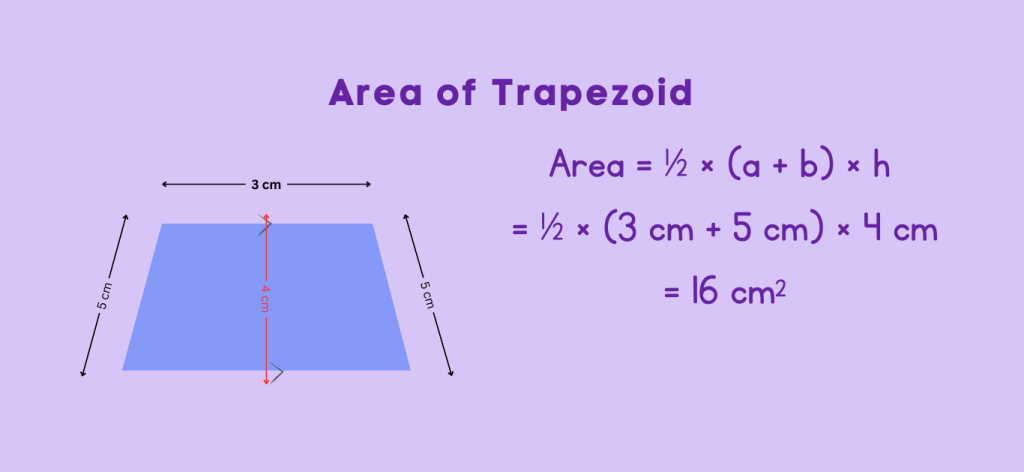
Example 3: Area of Parallelogram
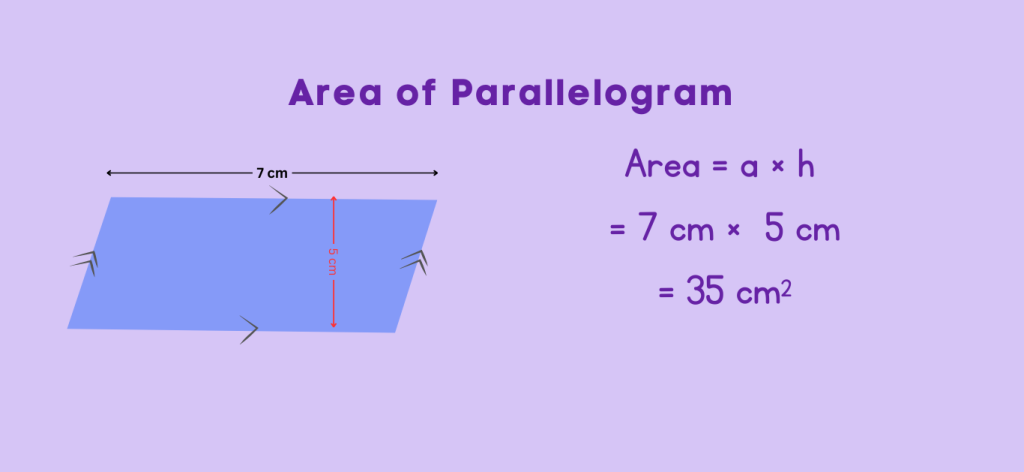
Example 4: Area of Rhombus
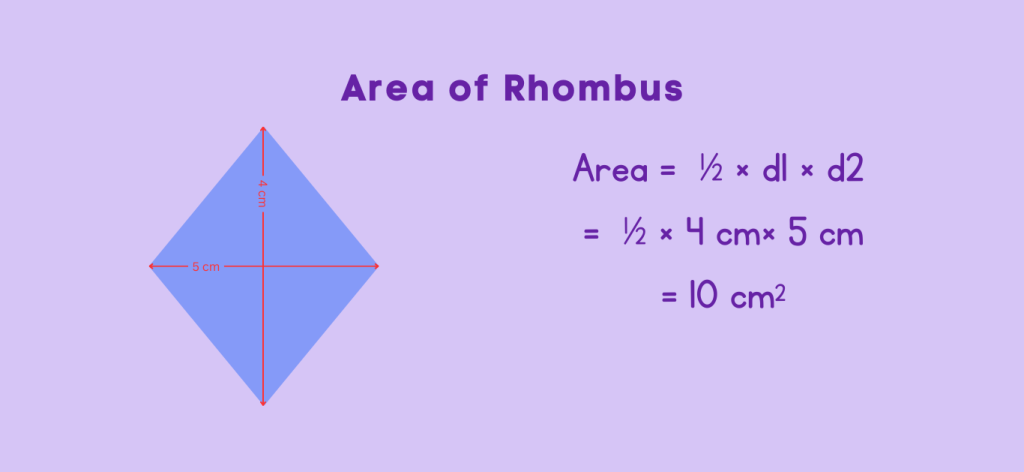
Quiz
Tips and Tricks
1. Identify the Type of Quadrilateral
Tip: Determine if the quadrilateral is a square, rectangle, parallelogram, rhombus, trapezoid, or kite. Each type has a specific formula for calculating area.
2. Break It Down
Tip: If the quadrilateral is irregular or you can’t easily classify it, try dividing it into simpler shapes like triangles or rectangles. Calculate the area of each part and then sum them up.
3. Use Diagonals
Tip: For quadrilaterals like rhombuses and kites, the lengths of the diagonals are crucial. Make sure you measure them accurately, as they are used directly in the area formulas.
4. Double-Check Dimensions
Tip: Ensure that the measurements for all necessary sides, heights, and diagonals are accurate. Small errors in measurement can lead to significant discrepancies in area calculations.
5. Use Height Correctly
Tip: For parallelograms and trapezoids, the height is the perpendicular distance between the bases (not the slanted sides). Make sure you’re using the correct height in your calculations.
Real life application
Scenario: Room Flooring
When planning to install new flooring in a room, the area of the quadrilateral-shaped floor space needs to be calculated to determine the amount of flooring material required. By applying the area formula, the accurate measurement of the floor space can be obtained, ensuring the appropriate amount of material is purchased.
Scenario: Land Plot Measurement
In real estate and land surveying, the area of irregularly shaped land plots is calculated using the area formula for quadrilaterals. This calculation aids in determining the accurate size of the land plot for legal and development purposes.
Scenario: Architectural Design
Architects and designers utilize the concept of the area of a quadrilateral to plan and create structures with specific area requirements, such as floor space, wall surfaces, and landscaping layouts.
FAQ's
Like? Share it with your friends
